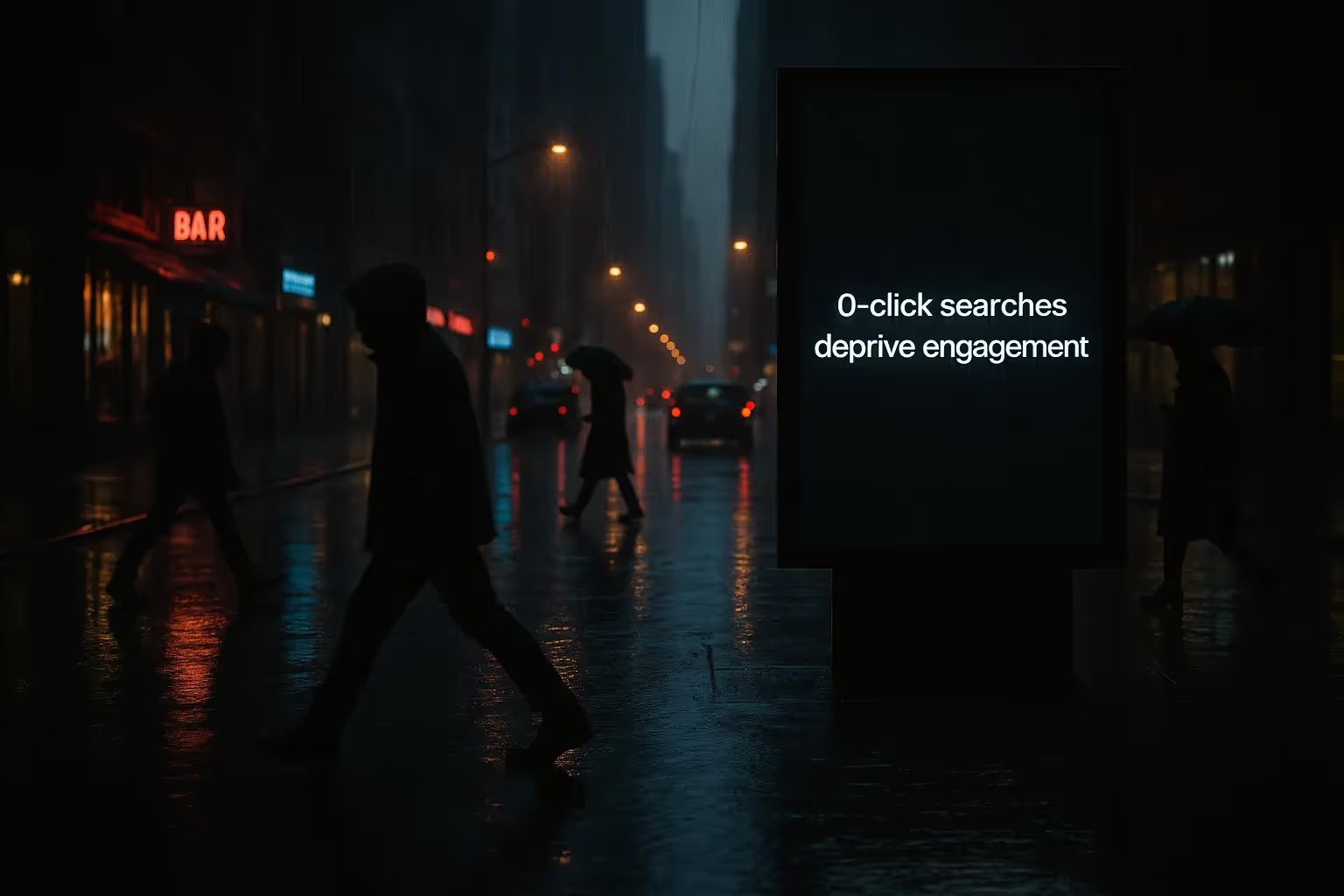Understanding Zero-Click: The Shift from Traffic to Visibility
Zero-click searches are not just a quirk of Google’s design. They are a structural shift in how people interact with information. According to data from Semrush and SparkToro, over 57% of Google searches in 2023 ended without a click. This is even more pronounced on mobile, where search engines prioritise speed and direct answers. The rise of zero-click is driven by three forces: 1. Featured snippets that answer queries directly 2. Knowledge panels and People Also Ask boxes 3. AI-generated summaries from tools like Google’s SGE and Microsoft’s Copilot These features are designed to reduce friction for users. However, they also reduce opportunities for websites to capture traffic. This means traditional SEO metrics like CTR (click-through rate) are becoming less reliable indicators of success. Instead, the focus is shifting toward “search presence”. This means how often your brand appears in high-trust, high-visibility positions, even if users don’t click. McKinsey has noted that visibility at the moment of decision is often more influential than downstream engagement. In this context, zero-click becomes a branding opportunity, not just a traffic challenge.
Optimising for Featured Snippets and Structured Visibility
Featured snippets are the crown jewel of zero-click real estate. They appear above organic results and are often read aloud by voice assistants or summarised by AI tools. According to Ahrefs, over 12% of search queries now trigger a featured snippet. To win featured snippets, content must be structured, concise and contextually rich. This includes: - Using clear H2 and H3 headers that match common query formats - Providing direct, well-formatted answers within the first 100 words - Including lists, tables or definitions where relevant - Leveraging schema markup to help search engines understand intent But it is not just about formatting. Behavioural framing matters. Users are more likely to engage with content that reduces cognitive load and confirms their intent. Tools like GPT-4o and DeepSeek AI are increasingly using featured snippets as training data and reference points. If your content is selected, it becomes part of the AI knowledge layer. It influences not just search, but the broader information ecosystem. Bushnote, for example, uses AI search optimisation strategies to position clients within high-authority zero-click zones. Their approach combines behavioural science, structured content and metadata engineering to maximise visibility in AI summaries and search previews.Measuring Success Beyond Clicks: New Metrics for a New Era
If clicks are declining, what should you measure instead? The answer lies in reframing what success looks like in the zero-click landscape.
Emerging metrics include:
- Impressions in featured snippets and knowledge panels
- Brand mentions in AI-generated summaries
- Dwell time on search results (via tools like Microsoft Clarity)
- Search share of voice (SOV) across categories
- Engagement on follow-up channels (for example, branded search, direct traffic)
According to Deloitte, attribution models must now account for “invisible touchpoints”. These are moments when a user sees your brand and forms a perception, but does not click. These moments are especially powerful in B2B, healthcare, and government sectors where trust and familiarity drive long-term decisions.
One practical strategy is to align your zero-click content with downstream conversion paths. This could mean embedding brand language in snippets, linking to high-intent landing pages, or using retargeting to capture users who saw your content but did not click.
In short, visibility is the new currency. And like any currency, it must be invested wisely.

AI Summaries and the Rise of Search as Media
With the rollout of Google’s Search Generative Experience (SGE) and Microsoft’s Copilot, search is becoming less like a directory and more like a media platform. AI summaries synthesise multiple sources into a single answer. They often provide the answer without attribution or clicks.
This changes the game. Content must now be optimised not just for users, but for AI models. That means:
- Writing with semantic clarity and topical authority
- Using consistent terminology and structured formats
- Earning citations from high-trust domains (for example, CSIRO, Treasury, academic journals)
The goal is to become a “source of truth” that AI systems reference. This requires both technical SEO and strategic content positioning.
Bushnote’s AI Search Optimisation service addresses this directly, helping brands shape how they are represented in AI generated answers. Their approach ensures that content is not only visible, but influential. It shapes the narrative at the point of search.
As search engines become answer engines, the distinction between SEO, PR and brand strategy is collapsing. Smart organisations will treat search as a media channel. In this channel, the headline is the answer, and the click is optional.
Strategic Takeaways: Adapting to the Zero-Click Future
Zero-click searches are not a problem to solve, but a reality to adapt to. The winners will be those who understand that influence now happens before the click.
To succeed:
- Optimise for visibility, not just traffic
- Treat featured snippets and AI summaries as brand assets
- Align content structure with behavioural intent
- Measure presence, not just performance
- Build trust signals that AI models recognise and reuse
This is not the end of SEO. It is a reframing. From chasing clicks to shaping perception. From traffic to trust. From content to consequence.
The brands that thrive in this new landscape will be those that understand one simple truth: if users do not click, your message must work where they stop.
TLDR: Zero-click searches, where users get answers directly in search results without clicking, now dominate Google and AI powered search engines. To adapt, brands must optimise for featured snippets, structured data, and AI summaries. Success is no longer measured only by clicks, but by visibility, authority and influence at the point of search. Strategic content, behavioural framing and AI optimised metadata are essential to stay competitive.
.png)


